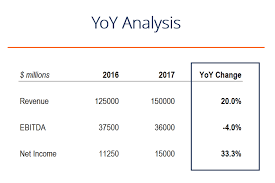Understanding the Poshmark IPO: What You Need to Know

Understanding poshmark ipo Business Model
poshmark ipo founded in 2011, has become a significant player in the online resale market, allowing users to buy and sell used fashion items seamlessly. Its mission is to create a vibrant community for fashion lovers, transforming the shopping experience into a social event rather than a transactional one. The platform prioritizes user engagement and interaction, enabling buyers and sellers to connect over shared interests in fashion, sustainability, and personal style.
The unique business model of poshmark ipo revolves around empowering individuals to set up their own online boutiques. Users create listings for items they no longer want, effectively turning their closets into potential revenue streams. This peer-to-peer marketplace reduces the barriers to entry for individuals wishing to engage in commerce, enabling anyone to become a seller. By facilitating this user-driven approach, Poshmark leverages the growing trend of circular fashion—encouraging a more sustainable approach to consumerism.
One of the distinguishing features of Poshmark is its social networking aspects. The platform allows users to follow each other, share listings, and even host virtual “Posh Parties” where users can promote their items to a wider audience. This social component not only enhances the shopping experience but also fosters a sense of community among users, setting poshmark ipo apart from traditional e-commerce platforms. As the online resale market continues to expand, Poshmark has successfully positioned itself as a leader by combining e-commerce with social engagement.
As we look towards the future, the poshmark ipo IPO marks a significant milestone for the company and its community. It demonstrates the potential for growth within the resale market and offers a glimpse into how Poshmark plans to leverage its innovative business model to capture more market share. Ultimately, Poshmark’s commitment to sustainability and community-building places it in a favorable position within an ever-evolving market landscape.
The Significance of the Poshmark IPO
The Initial Public Offering (IPO) of Poshmark marks a pivotal moment not only for the company but also for the larger resale and e-commerce markets. By going public, Poshmark is transitioning into a new phase of growth and exposure that can significantly influence its operational strategy and market reach. This move allows Poshmark to raise substantial capital, which can be strategically reinvested in technology, marketing, and expansion efforts, thereby enhancing shareholder value and competitive standing.
The Poshmark IPO is especially noteworthy as it reflects an overarching trend in the resale market, characterized by increasing consumer acceptance of second-hand goods. Recent statistics indicate a burgeoning interest in sustainable shopping practices, and Poshmark, with its unique social commerce platform, is positioned to capitalize on this market shift. Preliminary financial reports leading to the IPO have shown promising growth, with increasing user engagement and a diverse inventory. The platform boasts millions of active users, demonstrating strong community interaction and engagement, which are critical components for success in the e-commerce landscape.
Market expectations surrounding Poshmark’s debut are high, driven by the growing popularity of resale platforms amidst a changing retail environment. Investors are keen to assess how Poshmark will navigate the competitive landscape and leverage its brand equity in the public realm. The potential for growth in this sector, coupled with Poshmark’s innovative approach, could signal significant opportunities for long-term investors. Ultimately, the significance of the Poshmark IPO extends beyond the firm itself; it serves as a bellwether for the future of online resale shopping and the evolving paradigms of consumer spending habits.
Market Reactions and Analysis Post-IPO
Following the Poshmark IPO, the market reactions have been a focal point for investors and analysts alike. The initial offering was met with considerable interest, reflecting the growing e-commerce landscape and the increasing popularity of resale platforms. Upon entering the public market, Poshmark saw its stock price experience significant fluctuations. Initially, shares surged, indicating strong investor confidence. However, as the days progressed, the stock exhibited volatility, prompting further scrutiny into the sustainability of its valuation.
Investor sentiment following the Poshmark IPO has been mixed. While some investors remained optimistic about the company’s long-term growth potential, others expressed caution, reflecting concerns over the competitive nature of the online resale market. This marketplace is characterized by established players such as eBay and newer entrants that continuously innovate to capture consumer attention. The performance of Poshmark post-IPO has drawn comparisons to its peers, as analysts closely observe key performance indicators such as user growth, transaction volume, and market share shifts.

Expert opinions regarding Poshmark’s future prospects highlight the necessity for the company to solidify its position in a saturated market. Analysts emphasize that maintaining a compelling value proposition is crucial for Poshmark to attract and retain users. Additionally, continued investment in technology and user experience is deemed essential in enhancing customer loyalty and expanding market reach. Notably, analysts have differing views on whether Poshmark can sustain its growth trajectory while navigating market challenges. Overall, the response to the Poshmark IPO serves as a bellwether for investor confidence in the broader online resale market and warrants ongoing observation as the company attempts to carve out its niche in this dynamic sector.
Future Outlook for Poshmark After Going Public
The Poshmark IPO marked a significant milestone in the company’s trajectory, but the path ahead presents both opportunities and challenges that will shape its future. As Poshmark integrates itself into the public marketplace, it must navigate a dynamic retail landscape characterized by shifting consumer preferences and heightened competition. One of the foremost challenges is the necessity to differentiate its platform in an increasingly crowded resale market. With numerous players emerging in the online resale domain, Poshmark must continuously innovate and enhance user experience to retain its loyal customer base while attracting new users.
To address these challenges, Poshmark can leverage its strong community of sellers and buyers to create a more engaging shopping experience. This could entail expanding its product categories or introducing new services that cater to evolving consumer demands. Moreover, the strategic use of partnerships can also play a pivotal role in fostering growth. Collaborating with fashion brands, influencers, and even other technology platforms can amplify Poshmark’s brand visibility, driving more traffic to its site and enhancing its market reach.
Technological innovation will also be crucial in ensuring Poshmark’s longevity in the post-IPO landscape. By investing in advanced algorithms for personalized recommendations and streamlining logistics, the platform can enhance customer satisfaction and encourage repeat purchases. Additionally, exploring new features such as augmented reality could enrich the shopping experience, positioning Poshmark as a leader in e-commerce innovation.
Ultimately, sustained growth for Poshmark hinges on its ability to adapt to the ever-evolving retail environment while remaining true to its community-driven model. By focusing on strategic partnerships, technological advancements, and an unwavering commitment to its users, Poshmark is well-poised to carve out a successful future in the marketplace following its IPO.



